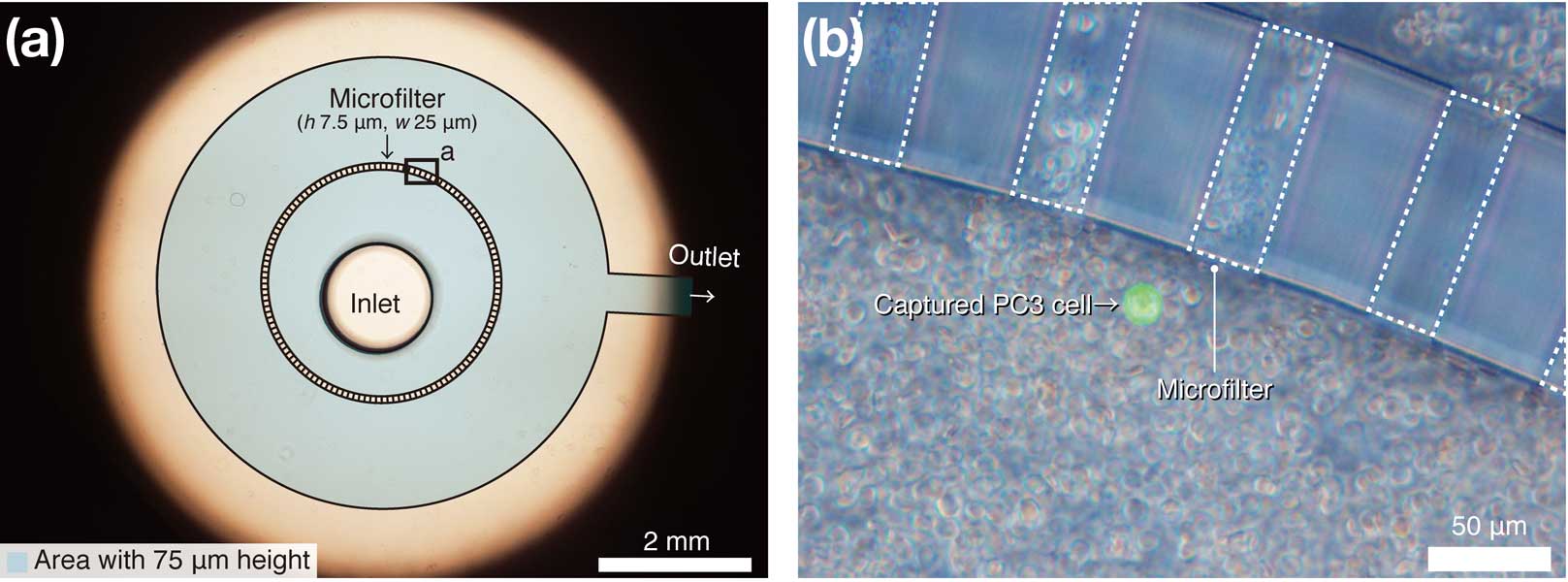Abstract
Tumor cells shed from primary tumor and circulating in peripheral blood are called circulating tumor cells (CTCs). It is important to understand the biology of CTCs such as metastatic process and to predict treatment response and disease progression. Since CTCs are extremely rare and admixed with numerous blood cells, isolation and characterization of CTCs are technologically challenging. Although a FDA-approved system to separate CTC using immunomagnetic beads has already been commercialized, its sensitivity is not high enough. To address this, numerous microfluidic approaches have been proposed so far. They can be roughly classified into two main groups: a cell size-based method using microfilter to separate CTC and an affinity-based method using antibody-coated surface. However, both of them are not perfect because of loss or inefficiency of CTC separation, which are caused by variations in CTC size and differences in expression of surface marker protein against the antibody for immunoaffinity. Therefore, we proposed an approach to separate CTCs by combining both of the cell size-based method and the affinity-based separation method. Using this new method, we could successfully separate prostate cancer cells from blood sample in a microfluidic well.
 CTC separation using microfilter and antibody-coated surface
CTC separation using microfilter and antibody-coated surface
 Microfluidic well to separate CTC (left) and captured PC3 cell spiked into a blood sample (right). The height of microfilter is 7.5 μm.
Microfluidic well to separate CTC (left) and captured PC3 cell spiked into a blood sample (right). The height of microfilter is 7.5 μm.
Collaboration
- Division of Protein Engineering, The Cancer Institute of The Japanese Foundation for Cancer Research)
Sponsor
- JST